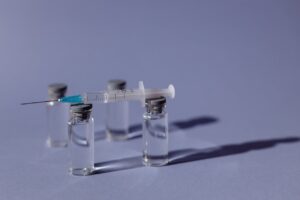
New research shows that several anti-obesity medications could be manufactured and profitability sold worldwide at far lower estimated lower prices compared to their high costs, according to a new study in Obesity, The Obesity Society’s (TOS) flagship journal.
“Access to medicine is a fundamental element of the human right to health. While the obesity pandemic grows, especially amongst low-income communities, effective medical treatments remain inaccessible for millions in need. Our study highlights the inequality in pricing that exists for effective anti-obesity medications, which are largely unaffordable in most countries. However, we show that these drugs can actually be produced and sold profitably for low prices. A public health approach that prioritizes improving access to medications should be adopted, instead of allowing companies to maximize profits,” said Jacob Levi, Intensive Care Medicine, Royal Free Hospital NHS Trust, London, United Kingdom. Levi is the corresponding author of the study.
Experts explain that the increasing recognition that diet and exercise alone is unlikely to result in sustained weight loss had led to renewed interest in medication to supplement lifestyle changes. Randomized controlled trials have demonstrated positive results with oral and injectable medications. However, these medications remain prohibitively expensive in most countries. Such high prices make it challenging for millions of people to afford the medications and obtain access to treatment.
“It would be great if everyone had affordable access to all medicines that might improve their health. Yet that is simply not possible, nor will it ever be. What is truly needed is a better way to ration the health care dollars currently available in efforts to maximize population health. That is the challenge ahead not just for anti-obesity medications but for all treatments,” said Eric A. Finkelstein, professor, Duke-NUS Medical School, Singapore, in a commentary about the study.
On the other hand, the authors have called for a public health based approach to obesity management similar to that used with other diseases. Andrew Hill, Department of Pharmacology and Therapeutics, University of Liverpool, United Kingdom, supervising author of the study, commented, “Worldwide, more people are dying from diabetes and clinical obesity than HIV, tuberculosis and malaria combined now. Millions of lives have been saved by treating infectious diseases at low cost in poor countries. Now we need to repeat this medical success story, with mass treatment of diabetes and clinical obesity at low prices. Pharmaceutical companies have an ethical responsibility to make their new treatments for diabetes and obesity available for anyone in need, in any country.”
The study’s authors searched national drug price databases and collected information on six medications: orlistat, naltrexone/bupropion, topiramate/phentermine, liraglutide, semaglutide and tirzepatide across a range of 16 low-, middle- and high-income countries. In each country, researchers assessed multiple online national price databases and selected the lowest available price from each of the sources. Medications selected were chosen because they are proven effective and because they illustrate a range of different monotherapies, combination tablets and injectable treatments.
Estimated minimum prices (EMPs) for anti-obesity medications were calculated using established methodology using active pharmaceutical ingredients from the Panjiva database. EMPs were calculated per 30-day course and include costs of active pharmaceutical ingredients, excipients, formulation, taxation and 10% profit margin.
Results revealed that national prices of oral and injectable anti-obesity medications were significantly higher than calculated EMPs.
Oral Medications:
- Orlistat: Prices for a 30-day course of treatment were greater than $100 in the United States and less than $1 in Vietnam. The calculated EMP from export API data was approximately $7 per 30-day course.
- Naltrexone/bupropion: Costs for naltrexone/bupropion combination tablets range from $326 in the United States to $56 in South Africa compared with an EMP of $55 per 30-day course.
- Topiramate/phentermine: Price data was only available in the United States since the medication is not licensed for use for weight loss in several countries because of safety concerns. Prices in the United States ranged from $120 to $199 per course compared with the EMP of the combination tablets at $5. Prices were also searched separately of topiramate and phentermine and combined with available data together from the United States, South Africa and Kenya. EMP’s for each drug individually were $0.86 for topiramate and $0.53 for phentermine (total of $1.39 per course) based on API export data.
Injectable Medications:
- Liraglutide: Injectable anti-diabetic and weight loss agent liraglutide costs $1,418 in the United States and $252 in Norway. The EMP per 30-day course was $50. Researchers note that this price was calculated assuming the most efficient concentration and dosage of available pens for injection.
- Semaglutide: National price data for subcutaneous semaglutide were all higher than EMPs ranging from $804 in the United States to $95 in Turkey. The EMP of subcutaneous semaglutide was calculated to be approximately $40 per 30-day course.
- Tirzepatide: National price data was only available in the United States, where the medication was recently licensed for use in type 2 diabetes by the Food and Drug Administration. The medication is not licensed for obesity alone. Prices for 30-day course ranged from about $715.56 to $1,100.70. Insufficient data existed in the database to calculate an EMP.
The study’s authors note that EMPs are meant as realistic targets for competitive generic production rather than patented versions.
Caroline M. Apovian, MD, FTOS, co-director, Center for Weight Management and Wellness and professor of medicine at Harvard Medical School in Boston, Mass., commented, “Once we have shown that anti-obesity agents notably GLP-1 and combinations thereof lower cardiovascular risk, we can then demand universal insurance coverage of these agents. These agents used for obesity prior to the advent of type 2 diabetes, cardiovascular disease and other complications, have the power to reduce the cardiovascular burden and lower mortality worldwide.” Apovian was not associated with the research.
Other authors of the study include Junzheng Wang, Medical Sciences Office, Oxford University, Clinical Academic Graduate School, University of Oxford, Oxford, United Kingdom and Francois Venter, Ezintsha, Faculty of Health Sciences, University of the Witwatersrand, Johannesburg, South Africa.
Venter has received support from the Bill and Melinda Gates Foundation, U.S. Agency for International Development, Uni-taid, SA Medical Research Council, Foundation for Innovative New Diagnostics, the Children’s Investment Fund Foundation, Gilead, ViiV, Mylan, Merck, Adcock-Ingram, Aspen, Abbott, Roche, Johnson & Johnson, Sanofi, Virology Education, SA HIV Clinicians Society and Dira Sengwe. The other authors declared no conflict of interest.
Funding for this study was provided by the Make Medicines Affordable/International Treatment Preparedness Coalition, grant number ITPC-MV_2020, and National Heart, Lung, and Blood Institute of the National Institutes of Health under award number UG3HL156388.
Source link:https://www.hcplive.com/




